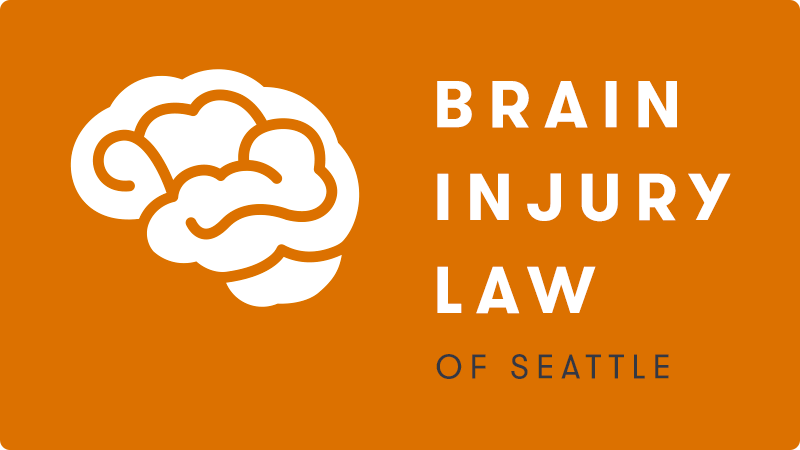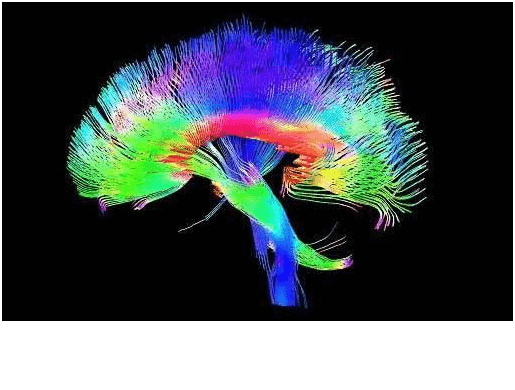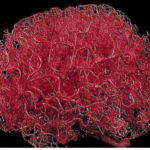How it works: First, let’s be honest. Fully understanding Diffusion Tensor Imaging MRI requires a good understanding of physics and radiology. Because I am not a master of either, I am going to try and explain DTI MRI in layman’s terms as much as possible so you can understand the basic concepts without making your eyes glaze over by getting deep into the physics.
Page Contents
WHAT IS DTI?
First, let’s imagine the structure of the brain cell in the white matter of the brain. I say white matter because Diffuse Tensor Imaging primarily measures alteration in white matter cellular function. This is important because gray matter is the outer ½ inch or so of brain matter that is next to the skull. The inner part of the brain is largely white matter.
So a typical healthy white matter brain cell, or axon, looks like the middle axon drawing below:
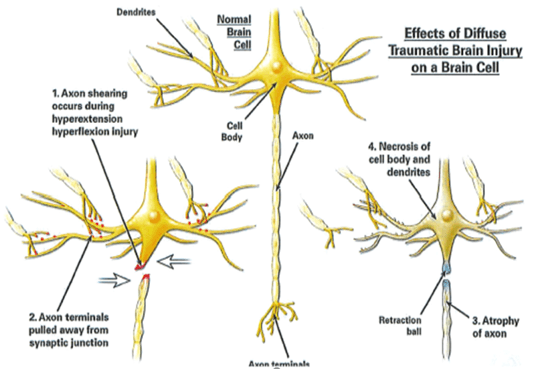
You will notice the long white matter tract, or axon, flowing the length of the brain cell. When we think, we are generating an electrical signal that travels the length of the brain and then jumps to the next brain cell. To accomplish this feat, the brain cells are insulated, rather like an electrical wire so that the electricity can pass through the wire without shorting out. To help the signal travel easily along the axon, there are small tubes that run along the length of the axon that contain water.
The water of course contains water molecules that we know act a certain way in a healthy brain. In short, these water molecules travel along the length of the axon parallel to the axon in the tube mentioned above. With a healthy brain, this happens in billions of white matter brain cells every second of the day.
Knowing that every white matter axon has these water molecules running parallel to the axon, the basic principle behind Diffusion Tensor Imaging is that by tracking the flow of water molecules using the magnetic field of the MRI, and producing a visual image of this process, doctors can easily see that in a healthy brain the white matter tracts are intact.
This process will produce a beautiful image of the white matter tracts showing that the brain is healthy, as shown below:
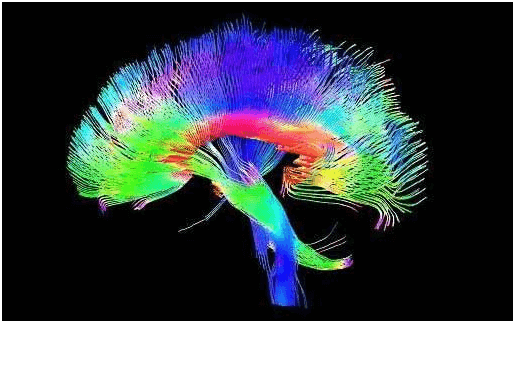
DIFFUSION TENSOR IMAGING OF THE BRAIN
But what happens if a person has damage to the white matter brain cells from a concussion or brain injury? When a person is hit in the head, causing a shock wave to go through the cranium, the impact will jolt the axon with enough force to sever the axon, as shown on the left in the illustration of the normal brain axon:

Once this damage occurs, the water in the brain cell cannot flow easily along the length of the axon as it did before, and then protrudes out from the axon at a 90 degree angle. Just as a gash in a garden hose will shoot water out at a 90 degree angle, the water in the axon is then forced out of the axonal tubes in the same manner.
When the MRI is done, the Diffuse Tensor Imaging sequence then sees that the water molecules are not flowing parallel to the axon but perpendicular to it. It then registers this disturbance in the axon, and instead of seeing the normal DTI image that was seen above, you instead get an image like this below showing how the white matter tracts have been damaged and the water is no longer tracking parallel to the axon as it did before:
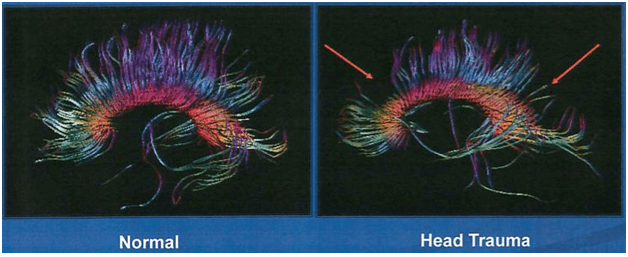
When this is used in conjunction with other clinical data supporting a brain injury, one can see the location of the axonal damage and potentially correlate it to the areas of cognitive dysfunction (ie. Memory loss, learning problems, visual or auditory issues, etc.). One can also correlate it with findings on the ASL scan in terms of damage showing in certain areas.
Diffusion Tensor Imaging (DTI) has been around for nearly 30 years, and is well accepted as a means of demonstrating axonal damage, not just in TBI cases, but is used for identifying other brain problems as well.
At Brain Injury Law of Seattle, we use DTI in conjunction with other objective methods of proving brain injuries so that we can best understand the manner in which our client’s have brain injuries to get them the help that they need. For more details contact us today!
